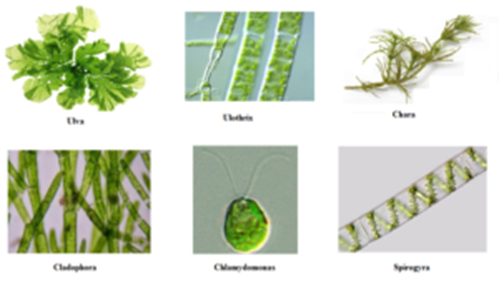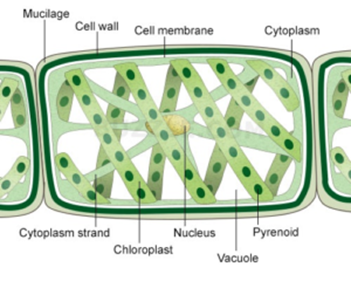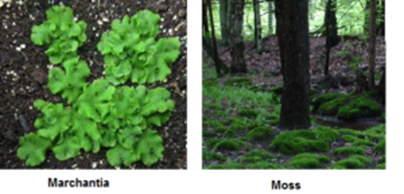In this article, we shall get a general idea of the classification of plants. In the next articles, we shall study the classification of plants in detail.
Characteristics of Kingdom Plantae:
- Kingdom Plantae consists of all plants which are multicellular eukaryotes with cell walls.
- All plants contain plastids. Plastids are a double-membrane organelle that possesses photosynthetic pigments called chlorophyll.
- They are autotrophs and use chlorophyll for photosynthesis. A few members are partially heterotrophic such as the insectivorous plants or parasites. Bladderwort and Venus flytrap are examples of insectivorous plants and Cuscuta is a parasite.
- The members of Plantae are the main producers and provide food directly or indirectly to all living organisms. Reserve food material is in the form of starch.
- Vascular tissues are absent in lower plants i.e. Algae and Bryophytes but present in higher plants i.e. Pteridophytes, Gymnosperms, and Angiosperms.
- The life cycle of plants has two distinct phases the diploid sporophytic and the haploid gametophytic – that alternate with each other. The lengths of the haploid and diploid phases, and whether these phases are free-living or dependent on others, vary among different groups in plants. This phenomenon is called alternation of generation.
- Kingdom Plantae includes algae, bryophytes, pteridophytes, gymnosperms, and angiosperms.
Levels of Classification of Plants:
There are three levels of classification among plants. The first level of classification among plants depends on whether the plant body has well-differentiated, distinct components. Depending upon this criteria plants are classified as Thallophyta, Bryophyta, and Pteridophyta. The thallophytes, the bryophytes, and the pteridophytes have inconspicuous reproductive organs hence they are therefore called ‘cryptogamae’, or ‘those with hidden reproductive organs’.
The second level of classification is based on whether the differentiated plant body has special tissues for the transport of water (xylem) and other substances (phloem)within it. Depending upon this criteria plants are classified as vascular (having xylem and phloem) and non-vascular (not having xylem and phloem).
The third level of classification is based on seed-producing and non-seed producing. If seed-producing then on the basis whether the seed is enclosed or not.
In 1883, Eichler divided the kingdom Plantae into two sub-kingdoms, Cryptogamae and Phanerogamae
Sub-kingdom Cryptogamae:
(Greek – cryptos – hidden, gamos – marriage):
Characteristics of Sub-kingdom Cryptogamae:
- These are lower plants and do not bear flowers or seed. Hence they are called non-flowering and seedless plants.
- The reproductive organs are inconspicuous (not clearly visible).
- The embryo, if present is naked and is called spores.
- They include three divisions: Thallophyta, Bryophyta, and Pteridophyta
Division Thallophyta:
- Plants belonging to this group do not have well-differentiated body design but has a simple body design.
- The plants in this group are commonly called algae.
- These plants are predominantly aquatic. freshwater or marine.
- It includes only one sub-division Algae
- Examples are Spirogyra, Ulothrix, Cladophora, and Chara.
- Various types of fungi like yeasts and moulds which do not have chlorophyll are also included in this group.


Sub-division Algae:
- They are autotrophs.
- The body is simple and not well differentiated.
- The form and size of algae are variable. Chlamydomonas is microscopic, unicellular algae. Volvox is found in a colonial form. Ulothrix and Spirogyra are in filamentous form.
- Algae are further classified as Green algae, Red algae, and Brown algae. The red colour and brown colour of algae are due to the presence of accessory photosynthetic pigments.
Division Bryophyta:
- The plant body is commonly differentiated to form a stem and leaf-like structures.
- Roots are not present, but a small root-like structure is present called rhizoids.
- No specialized tissue for the conduction of water and other substances from one part of the plant body to another is present.
- These are called the amphibians of the plant kingdom because they grow in moist areas.
- It has an embryo stage in its developmental process.
- The sex organs are multicellular. The male sex organ is called antheridium and produces antherozoids. Female sex organ is archegonium and produces a single egg.
- Examples are moss (Funaria) and Marchantia (Liverwort), Anthoceros, Riccia



Division Pteridophyta:
- In pteridophytes, the plant body is sporophyte and can be differentiated into roots, stem, and leaves. It is the highest group among cryptogams.
- They have a specialized tissue for the conduction of water and other substances from one part of the plant body to another. Hence they are also called vascular cryptogams.
- seeds are absent. They produce naked embryo called spores.
- Sporophytes bear sporangia which produce spores. On germination, this spore gives rise to a gametophyte called prothallus. Prothallus bear male sex organ antheridia and female sex organ archegonia.
- Some examples are Marsilea, ferns, selaginella, Equisetum, Pteris, Adiantum, Lycopodium and horsetails.


Division Spermatophyta:
- This is a division of seed-producing plants. The seed contains an embryo that contains reserve food for future growth.
- Its main plant body is sporophyte and can be differentiated into stem, leaves, and roots.
- Male and female gametophytes are distinct.
- They have a well developed vascular system throughout the body.
- Spermatophyta has two sub-divisions – Gymnospermae and Angiospermae
Sub-kingdom Phanerogamae:
(Greek – phaneros – visible, gamos – marriage):
Characteristics of Sub-kingdom Phanerogamae
- The plants of this group bear flowers and seeds. The plants of this group are also called spermatophytes.
- The plant body is well-differentiated into a true stem, leaves, and roots.
- Seeds are the result of the sexual reproductive process.
- Seeds consist of the embryo along with stored food, which serves for the initial growth of the embryo during germination.
- This group is further classified, based on whether the seeds are naked or enclosed in fruits, giving us two groups: gymnosperms and angiosperms.
Sub-division Gymnospermae:
(Greek- gymno– naked, spermae– seed):
- The plants of this group bear naked seeds and are usually perennial, evergreen and woody.
- It includes medium-sized trees and shrubs.
- Sporangia are formed over a modified leaf-like structure called sporophylls. There are two types of sporophylls. Megasporophyll bears megasporangium (ovule). It produces female gametes. Microsporophyll bears microsporangium (pollen sac). It produces male gametes.
- Examples are Pinus (pines), Cedrus (deodar), Cycas, Picea (Christmas Tree), Thuja (Morpankhi).


Sub-division Angiospermae:
(Greek – angio – covered, sperma– seed):
- These are flowering plants.
- The seeds develop inside an organ which is modified to become a fruit.
- These are the highly evolved group of plants.
- The reproductive organs are aggregated into flowers. The male sex organs are called stamens and female sex organs are called a pistil.

- Plant embryos in seeds have structures called cotyledons. Cotyledons are also called ‘seed leaves’ because in many instances they emerge and become green when the seed germinates. Cotyledons store food for developing embryo.
- The angiosperms are divided into two groups on the basis of the number of cotyledons present in the seed. Plants with seeds having a single cotyledon are called monocotyledonous or monocots (e.g. Maize, rice, wheat). Plants with seeds having two cotyledons are called dicots (e.g. Bengal gram, garden pea).

Class Dicotyledonae (Dicots):
- They have two cotyledons in the seed.
- Their leaves show reticulate venation with a network of veins.
- Their root system is a tap root system.
- The stem is strong and hard.
- The flowers have five or multiple of five petals.
- Some examples are Pea, Mango, Bengal gram Banyan, etc.
Class Monocotyledonae (Monocots):
- They have one cotyledon in the seed.
- Their leaves show parallel venation.
- Their root system is the fibrous root system.
- Stem may be hollow (e.g. Bamboo), False (e.g. Banana) or disc-like (e.g. Onion)
- The flowers have three or multiple of three petals.
- Some examples are Wheat, Rice, Maize, Sugarcane, Coconut, etc.
4 replies on “Brief Idea of Classification of Plants”
nice & simply narrated information very helpful for the people they do not have a educational background in botany
nice & brief information sir
Interesting explanation
Nice thank u